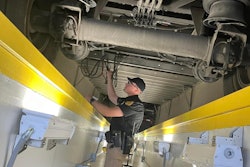I've been a journalist for more than 20 years, and more than half of that time has been spent with y'all in transportation.
I have learned in my career that sometimes you just have to concede that you're not going to be able to wrap your head around a news story or an outcome. In the span of a week last month, that happened to me. Twice.
A St. Louis jury hammered Wabash last month with a $462 million verdict in a case stemming from a May 2019 fatal crash in which a passenger vehicle hit the rear of a 2004 Wabash trailer being pulled by now-defunct Akron, Ohio-based GDS Express.
The short version is this: The driver rear-ended a nearly stopped trailer, snapped off the underride guard, and both he and his passenger were killed. The underride is federally regulated by the National Highway Traffic Safety Administration (NHTSA). Evidence Wabash presented in court showed the car was traveling 55 mph at impact – 20 mph faster than the current National Highway Traffic Safety Administration (NHTSA) underride standard, and 25 mph faster than the standard when this trailer was built in 2004.
From a legal and regulatory standpoint, Wabash seems to have done all it possibly could and should have done before it rolled this trailer out of its assembly plant. However, after 15 years and God knows how many miles, it apparently wasn't enough. Wabash does offer an optional "beefier" guard.
Just a few days later, plaintiff attorneys in Alabama secured a $160 million verdict against Daimler Truck in favor of a driver of a 2023 Western Star truck carrying wood products who was involved in an accident that caused his truck to roll over, breaking his neck. Plaintiff attorneys argued that there was an automatic pull-down safety seat available that could have saved their client from injury. The seat is indeed an option for the model, but it wasn't spec'd in the truck.
Isn't that was options are for? So customers can pick and choose the things they want and need based on their unique set of circumstances?
Cab crash standards aren't federally regulated but manufacturers do subject their models to a battery of SAE International crashworthiness tests. "We stand by the safety of our products and our safety testing (including cab crush) meets and exceeds all industry standards in place in the U.S. and worldwide," Daimler Truck North America told me. "We have strong grounds for appeal and intend to pursue this action."
In each tragic case, there's every reason to believe that both pieces of equipment met the widely accepted safety standards in place for trailers and trucks at their date of manufacture. Yet, that didn't matter.
Why have regulations and standards if meeting them (or not exceeding them by some arbitrary factor that is unknown at the time of the event) isn't good enough?
Passenger vehicles are responsible for roughly 80% of all truck-involved crashes, yet the transportation industry has largely been held responsible for facing daily the most distracted group of humans that have ever existed – all traveling at or above posted speed limits.
Why aren't we scrutinizing the design of automobiles and automotive technologies the way we do the design of trailers? Yes, most cars are safer now than they have ever been, but not in the case of underride. The auto industry has had the same period of time to act as the truck and trailer industry. Should cars be taller? Should underride be part of passenger vehicle crash testing?
Should bans and limitations on cell phones and personal devices be more restrictive and their use at-speed more punitive?
National Highway Traffic Safety Administration (NHTSA) will require all new passenger cars and light trucks to have automatic emergency braking (AEB) by September 1, 2029. That should go a long way toward mitigating underride, but is it enough? Many safety advocates want trailers retrofitted with stronger rear underride protection and want side underride added. Should passenger vehicles not factory-equipped with AEB be retrofit?
All concerned parties have a goal of zero highway fatalities, but there has to be a practical and equitable approach to getting there.












